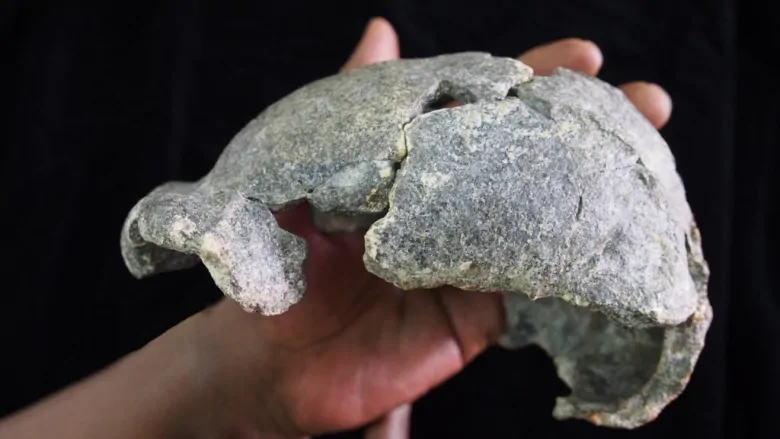Early toolkits and toolmakers more diverse than previously thought

The discovery of a variety of different types of stone tools with the skulls of Homo erectus remains from more than a million years ago shows that early toolmakers used a bigger toolkit than had been previously thought.
The fossils were found at two sites in Ethiopia, a country which has yielded a trove of remains from our early human ancestors dating back several million years including the famous and much earlier Austrolopithicus specimen, “Lucy.”
This latest discovery included a thick-browed cranium from Homo erectus at one site believed to be from a male that dated to 1.26 million years ago, and a smaller cranium at the second site dating back more than 1.5 million years, believed to be female. This size diversity indicates that there might have been considerably different cultural roles filled by the Homo erectus sexes.
Stone tools are rocks that have been carefully selected, then chipped or flaked along the sides to make sharp edges that can be used for chopping and cutting. Markings on fossil animal bones from that time suggests these tools could have been to remove meat from bone among other things.
There’s a great variety in stone tools in the historical record, often corresponding to their age and sophistication. Some are pear-shaped cobbles that have been sharpened along one edge, while others involved more craftsmanship, with both sides sharpened, producing a triangular shape for more precise cutting.
Anthropologists have often considered particular styles of tools to be indicative of a species or group’s technological sophistication. The idea is that perhaps more advanced and refined tools suggest greater mental ability or cultural complexity.

Homo erectus is a key species in our family tree. They spread into Asia from Africa 1.8 to 1.9 million years ago. The researchers believe that these tool makers in Ethiopia started with less sophisticated tools, and developed more refined tool technology and the knowledge was passed along through future waves of migrations north. But this new discovery suggests that they didn’t abandon their old technology entirely.
Homo erectus was, of course, not the only human ancestor to develop stone tools. In 1959 famous anthropologists Louis Leaky working at the Olduvai Gorge in Tanzania, discovered the remains of an earlier species he later called Homo habilis, or “handy-man,” along with stone tools dating back more than two million years.
I had the good fortune to visit this site and see some of these tools close up.
A local curator showed me a box containing about a dozen cobbles. At first glance I said, “They look like stones picked out of a river.”
“They probably were picked out of a river,” he replied dryly.
Then he picked one up and handed it to me, saying, “Here, hold it in your hand.”
I took the stone that was about the size of an apple and placed the rounded side against my palm. It felt comfortable to hold. I could see how the other side of the stone between my fingers had been chipped away to form a sharp edge. The curator then took my arm and moved it up and down demonstrating the chopping action, where the weight of the stone would make it behave like an axe. In fact, the tools are referred to as hand axes.
As I took up the motion myself, it became obvious why it was fashioned in that shape. The stone fit perfectly in my hand. Then suddenly I felt a direct connection back two million years to whomever it was that held that exact same tool in their hand to make dinner not far from where I was standing.
I wondered what went on during those meals. Did they share their food? How did they communicate? What did they think about back then? It was a profound moment.
Our distant ancestors are sometimes referred to as primitive. And while their brains were smaller than ours, they were inventive, laying the foundations and traditions for all toolmaking right up to the present day.

The most poetic example of that tradition is the famous “Blue Marble” photo of the whole Earth taken during the last mission to the moon, Apollo 17.
It was the last photo of the entire planet taken by a person. (Astronauts on the International Space Station are too close to see the entire Earth all at once). How amazing that the last photo of our whole Earth taken with a hand-held camera, shows the continent of Africa in the middle of the frame, including Ethiopia and Tanzania, the site of the origin of human toolmaking.





